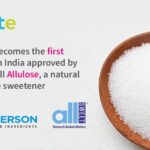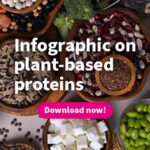5 Major food trends to look for in 2020 according to dietitians
Fortifying food products & making powerful Nutrition and Health Claims
Nowadays, consumers look for the health benefits of the products they purchase and as such, nutrition and health claims on products become increasingly more popular. The process of fortification includes adding micronutrients such as vitamins, minerals, proteins, or superfoods to food and beverage products to enrich it with nutrients. For example adding Vitamin D to milk, Vitamin B to cereals & bread and Omega 3 to nuts & seeds mixes. Whatever your product, look out for possible additions to your recipes to increase its nutritional value!
All-Natural Clean Products and Healthy Food Labels
Natural and organic foods and beverages are still on the rise with consumers looking for natural, clean simple ingredients without additives, preservatives or any artificial products. Consumers have become more adamant on reading food labels and consider the products’ macronutrient breakdown including total calories, fat, protein, carbohydrates, sugar and salt before making the purchase. Instead of using artificial sweeteners or high fructose corn syrup, try using coconut sugar or raw honey. Swap artificial flavours with natural flavours such as Linden ether (Honey flavour), massoia lactone (Coconut flavour), acetoin (Butter flavour)
Less Sugar…Or even No sugar at all
Considering the bad reputation sugar has and the health risks of consuming a high sugar diet, it is no wonder that food products with claims such as “No added sugar” Or “Low Sugar” are in high demand. Though consumers are on the lookout for lower sugar products, they are also still looking for taste and there are multiple natural ways to satisfy that sweet tooth. For example, the use of dairy flavours can be helpful in improving taste in healthy, reduced added sugar products. In bakery products, instead of using honey, try a sweet syrup reduction from a starch or fruit source such as syrups from monk fruit, pomegranate, coconut, sweet potato, and dates. These syrups will add just as much sweetness to your food product without the added sugar!
Low and No-Sodium Foods & Beverages
The demand for low salt products is increasing especially as more countries are starting to tax products with high sodium content. With salt being a key ingredient in adding flavour to food, it is only natural that food manufacturers are looking for other alternatives without sacrificing on taste. Adding aromatics like onions and garlic, herbs such as mint and basil, and spices like cinnamon and nutmeg enhance the flavours salt-free. Another option is considering salt substitutes like potassium chloride or flavour enhancers (yeast extracts) to keep the tastes intact.
Plant-Based
The increase in plant-based foods continues as more and more people are shifting towards more conscious eating, and as such opting for more vegetarian and vegan options. As the demand rises, we will be seeing more plant-based meat alternatives, dairy-free milk and cheese options, vegan-friendly condiments and ice creams. Common plant-based ingredients include soybeans, tempeh, beans, lentils, tofu, pea and brown rice protein isolates, and portobello mushrooms.







